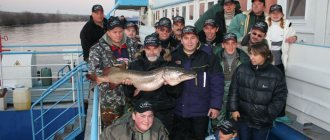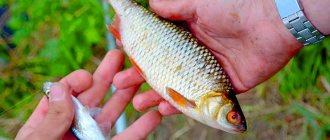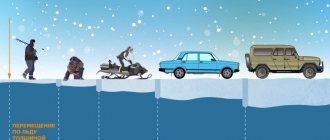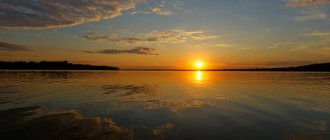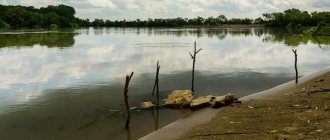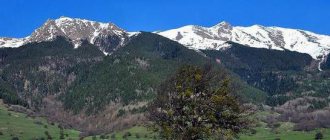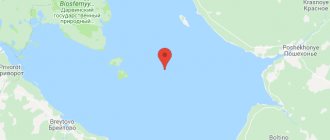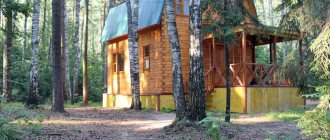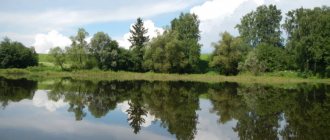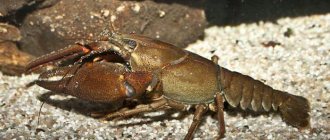Through the eyes of a tourist
The first thing you notice when you first come to these places is the huge mass of water that hangs over the city. A feeling of bewilderment immediately arises: how are people not afraid to live here? Driving along the dam through the spillway, which is encased in smooth concrete banks, you can observe the mesmerizing foam element beating against the iron gate, like an animal wanting to escape from its shackles onto the plain stretching out in front of it. The height of the water here is noticeably higher than the life bustling below, on the plain. More recently, the dam of the Krasnodar reservoir was guarded by military equipment, for example, there was an armored personnel carrier over the spillway, but now it is not visible. However, if you decide to go into a protected area (forbidden signs warn about it), it’s as if an armed man will appear out of the ground. While he is approaching you, you will have time to appreciate with your own eyes the full power of this technical structure of the twentieth century, of which, by the way, you cannot even see the opposite bank.
Antiquities of the Kuban Sea
It is much safer to inspect the Krasnodar reservoir from the Starokorsunskaya station; there is no longer a dam here, but there is a free approach to the water. In winter, the water level drops so much that sandbanks form. The remains of the washed away banks rise like fantastic ruins looking at the Krasnodar Reservoir. Holidays in these places will bring you an unforgettable experience. Local residents love to fish here, and if they’re lucky, they also catch ancient vessels, which from time to time are washed away by waves from the thick cultural layer from Starokorsunskaya to the former river bed towards Ust-Labinsk. People are attracted not only by fishing on the Krasnodar Reservoir, but also by black archeology. However, the police are not asleep either; annual raids bring a rich harvest of red-handed diggers of all stripes. Every spring, under the impact of waves, the earth falls away from the shores, exposing layers of the past millennia, most of which the waves carry with them to the bottom of the reservoir. Local residents of Starokorsunskaya tell how one spring a huge, completely intact amphora fell from a cliff into the water. One day a group of some Germans came here. The Hans offered to carry out cleaning work at the bottom of the reservoir at their own expense - this is a huge amount of activity. However, they set the condition that they take everything found at the bottom for themselves. Our officials refused such “help”.
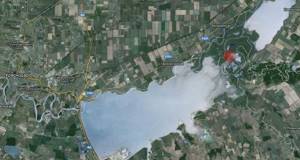
History of the Kuban Sea
The history of the creation of this remarkable object, also called the Kuban Sea, began back in 1967, when the Council of Ministers of the USSR approved the project for future construction. The Krasnodar reservoir was intended to act as a flood control device, protecting the capital of the region from high water in the winter and spring months, and then economic purposes were also pursued.
The reason for the construction was a terrible flood that happened 35 years earlier in 1932 - then the water covered vast areas and in some places stood for two years. In 1940, in order to avoid the recurrence of such disasters in the future, the creation of the Tshchik Reservoir began. Despite the outbreak of the war, it was completed, albeit later than planned, but it did not live up to expectations and flooding of Krasnodar and surrounding settlements continued.
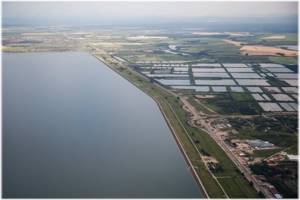
Before clearing the area on the site of the current reservoir, archaeologists worked thoroughly and made a lot of amazing discoveries. Multiple burials and several Bronze Age settlements dating back about 5,000 years have been found. Unfortunately, all these finds subsequently ended up under the water column and were irretrievably lost to history. In parallel with this, the authorities began resettling 11,000 Adyghe people who lived in two dozen villages that were also flooded by the reservoir.
The construction work involved 160 units of heavy equipment, 6,000 horses, and more than 15,000 workers, most of them unskilled, took part in it; in general, these were collective farmers gathered from all regions of the Krasnodar Territory. The amount of work done is amazing – it can’t be called anything other than a feat of labor. An area exceeding 40,000 hectares was cleared for the base of the catchment basin, 16,000 hectares of forest were cut down, and 170,000,000 cubic meters were removed. soil.
It is also worth considering that the work was carried out in wetlands - with floodplains, ponds and flooded areas. Construction took almost five years from 1968 to 1973. At the bottom of the reservoir, which was put into operation in December 1975, there were hundreds and thousands of hectares of fertile land, many settlements, 28 cemeteries, 5 mass graves, and about 160 ancient mounds.
Geographical features
The Krasnodar reservoir is the largest among other man-made reservoirs in the region, such as Varnavinskoye, Kryukovskoye, Neberdzhaevskoye, Shapsugskoye and two Atakayskiy. It has an elongated shape, stretches from southwest to northeast for 40 km in length, about 15 km wide, the total area of its mirror is 420 km, and the volume ranges from 2,000,000 to 3,100,000 cubic meters. m.
Due to regulated changes in water level, it does not have constant depths; the greatest depth reaches 18 m, the smallest within 5 m, but can vary up to 8 m, depending on filling or discharge. Six left tributaries of the Kuban - the rivers Apchas, Belaya, Marta, Psekups, Pshish, Shunduk - flow into the Krasnodar Reservoir from the east.
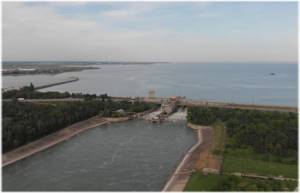
In addition to regulating floods in the lower reaches of the Kuban, which, by the way, the reservoir copes with excellently, its water is used for technical and economic purposes. The surplus is used for an irrigation system covering a huge area of several thousand hectares. Thanks to this, rice cultivation has been established in the region. It also serves as a kind of incubator for breeding valuable species of fish, which makes the Krasnodar reservoir special; fishing here is simply excellent, although catching young sturgeon is strictly prohibited.
Through the eyes of archaeologists
Aslan Tov (Adyghe archaeologist) has been working on the flat part of Adygea and the banks of the Krasnodar reservoir for more than thirty years. He says that in 1999-2003, together with a group of archaeologists from France, he explored burial grounds, ancient settlements, settlements and mounds on the southern shore of the Krasnodar reservoir. Of the entire series of objects, only twelve settlements belonged to the Maykop culture. Thanks to equipment brought by the French side, it was possible to find out that this culture is a thousand years older than previously thought. The famous archaeologist A. Leskov brought the leadership of Adygea to the discovered exhibits to show the officials what wealth was under their feet. And what? As a result, the French delegation curtailed its work and left. The leader of the expedition, Bertil Lionnet, was indignant that he came here to explore antiquities, and not to sponsor officials at various levels. This is the harsh reality...
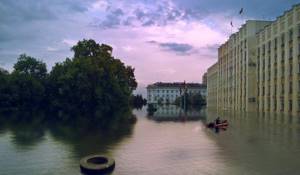
Predatory fish
To catch trophy pike perch, it is better to locate in the lower reaches of the river, but for medium-sized catfish it is typical to stay in deep pools. The gear used for this type of fish is a donka, and a foam fish is used as bait.
For fishing in Kuban you may need:
- Spinning rods;
- Float rod;
- Leashes;
- Feeders (for feeder fishing).
Fishing tips! Considering the large number of large fish in the reservoir, it is worth stocking up on fishing line and hooks. Breaks on a pond happen quite often, especially among beginners.
The Krasnodar reservoir was once stocked with fish, so there are always a lot of fishermen on its banks, including in winter. Freeze-up begins in November and ends at the end of March. The thickness of the ice allows for ice fishing.
And here's what you need to know: Fishing in Yeysk in 2018-2019
There is a lot of bream, silver carp and carp, roach and rudd, there are also pike perch and pike perch.
Experienced fishermen recommend fishing from a boat; the best bite is in the middle of the Krasnodar Reservoir. Fishing near the dam is prohibited.
In the southern part of the water area, silver bream and bleak, sabrefish and pike perch are caught. The upper reaches of the reservoir were favored by carp, catfish, ram and roach. And along all the banks you can definitely catch crucian carp and crucian carp.
From the memoirs of Soviet archaeologists
So, it has already become clear to the reader that all the land in this area is considered archaeological value. Today you can even hear claims that the oldest gold jewelry in Europe was found here. Thus, under the layer of water there are twelve settlements of the ancient Maykop culture, in addition, many ancient settlements, burial mounds and medieval cemeteries. Naturally, in the sixties, immediately before the flooding, archaeological groups worked here. However, the research was carried out both day and night under the constant urging of the builders. The leader of the group of scientists, N.V. Anfimov, said that they had to work under the light of headlights or lamps at temperatures from two minutes to plus four degrees Celsius. Today, the memory of some historical finds, most of which were made on the territory of the present Kuban Sea, is immortalized. For example, in Maykop one of the streets is named Kurgannaya. In 1972, on the site of the mound (the intersection of Podgornaya and Kurgannaya streets) a monument was erected - a vertical stone slab, decorated with images of objects that were discovered during excavations.
What's on the bottom?
The construction of the Krasnodar reservoir led to the flooding of a huge area - 420 square kilometers. Twenty villages and farmsteads and even part of Krasnodar were flooded. People were forcibly moved to new places. Many did not want to move, and this is understandable, because many generations of their families lived on this land. About fifty cemeteries were flooded. Most of them were pre-filled with concrete. So the Krasnodar reservoir caused a lot of curses from local residents.
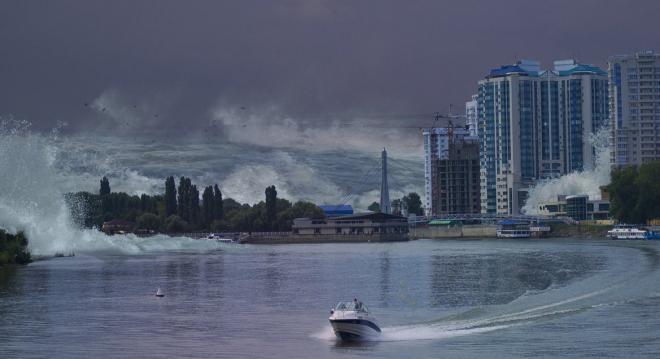
Historical reference
The construction of the Krasnodar reservoir took place in 1973, although the decision to build it was made back in 1967. The dam was finally put into operation in 1975. First, the reservoir was connected to the Tshchik Reservoir, and then the rest was filled with water.
During the construction of the reservoir, 26 villages had to be flooded. And this is 35 thousand hectares of land and 46 cemeteries (25 cemeteries were moved and 5 mass graves), of which not all were moved, but were covered with a thick layer of concrete.
And here's what you need to know: Fishing in the Syzran region
More than 30 thousand people were resettled. Two cities were built for the settlers: Tlustenkhabl and Adygeisk, formerly Teuchevsk.
For these people, who had lived in rural conditions all their lives, relocation was a great stress. There also remains a pressing problem of improving new cities, especially Adygeisk, because it was built on a wetland.
The city is constantly damp, but not only because of the swamps, but because of its proximity to the Krasnodar reservoir. And if we take into account that this is a seismically active area, then 3-4 points will be enough to destroy a populated area.
But in addition to populated areas, about 25 thousand arable Adyghe fields, which are famous for their black soil, were flooded. In addition, about 16 thousand hectares of forests were cut down.
12 settlements belonging to the Maikop culture were flooded. They really tried to save archaeological artifacts, but everything was done in a hurry. They saved what could be carried away; the rest of the artifacts were buried under the water.
To this day, as soon as the water level drops, residents of the coastal zone discover ancient artifacts (amphoras, household items) on the banks.
Construction problem
Since the day of its construction, the facility has been a source of complaints. In addition to flooding populated areas, arable lands, archaeological sites, burial grounds, etc., it creates a number of serious inconveniences for the region. This is a rise in groundwater levels, swamping of areas, changes in microclimate and, most importantly, the danger of flooding. After all, this monumental structure is located in a seismically dangerous area; over the past few years, five medium-sized earthquakes have been recorded here. According to experts, the dam will be able to withstand shocks of magnitude 4-5. In this regard, many are interested in the technical condition of the Krasnodar reservoir.
Modern problems of the Krasnodar reservoir
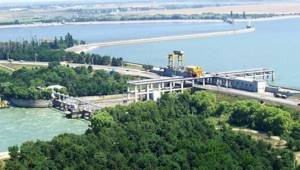
It is known that the reservoir is located in an area with increased seismic activity , where earthquakes with an amplitude of up to 8 points according to MSK-64 are possible. The probability of such a catastrophe in the next 50 years is 5%. Some scientists believe that a reservoir, poorly located, can independently provoke a shift of a tectonic plate and a subsequent earthquake.
Since the beginning of this century, work has been systematically carried out to strengthen dams, dams and a number of hydraulic structures. Thus, in 2011, the possibility of flooding in the airport area was eliminated. Efforts are underway to repair the discharge units, the drainage system has been restored, and water levels are monitored every 2 hours. The reservoir is potentially dangerous, but its condition is monitored, so residents of Krasnodar have nothing to fear.
It's time to do something!
Russian Defense Minister Sergei Shoigu also expresses serious concerns about this facility. After all, having examined the reservoirs of the Krasnodar Territory, a special commission came to the conclusion that it was necessary to repair this particular dam. During its existence, major repair work has never been carried out here; the infrastructure of the facility is in very poor condition. The section of five hundred meters in length causes the greatest concern among experts. There were gaps from 20 to 50 centimeters in the concrete covering. Today, the Russian Ministry of Emergency Situations recognized the Krasnodar reservoir as a dangerous object and took it under its permanent control.
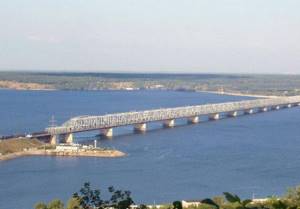
How to get there (get there)?
To go fishing, we recommend that you get to Lenin Khutor - minibuses No. 103, 114a, 141a and 161a go here.
Driving to the attraction by car is easy:
Note to tourists
- Address: Adygea-Kuban, Russian Federation.
- GPS coordinates: 44.985271, 39.275607.
Fishing is not limited to recreation on the Krasnodar Reservoir. There are leisure activities here for every taste - from walks along the shores, where Bronze Age artifacts are often found in potholes and wonderful photos can be taken, to hunting during the regulated season. The Kuban Sea is extremely picturesque; there are numerous recreation centers, reviews of which are very eloquent. Its only drawback is that swimming on the beaches is not allowed here. In conclusion - a video from fishermen, enjoy watching!
Krasnodar Reservoir: rest
Despite the above problems, this water body is a popular vacation spot for many residents not only of the Krasnodar Territory, but also of other regions of Russia. The climate here is hot and steppe. The reservoir and the Kuban River are a kind of border: on one side there is a steppe, and on the other there are plateaus and mountains. In summer, the temperature here reaches plus 35 degrees Celsius, and in winter it often drops below zero. On the shore of the reservoir lies the resort town of Krasnodar. Tourists can admire the architecture of nineteenth-century buildings; in addition, there are many interesting monuments, parks, beaches, and entertainment centers. Krasnodar is the capital of the Kuban Cossacks, so literally everything here is imbued with the spirit of this culture. Vacationers will be offered delicious Cossack cuisine and show programs with dancing. In the city itself and on the coast of the reservoir there are many hotels, boarding houses and recreation centers.
Spawning ban 2021 in the Karachay-Cherkess Republic
Dear fishermen! Please note the change in restrictions on the movement of small vessels in the waters of the Karachay-Cherkess Republic.
The use of small vessels is prohibited from May 15 to July 15:
- Zelenchuksky - district all water bodies of fishery importance
- Karachaevsky - district all water bodies of fishery importance
- Urupsky - district all water bodies of fishery importance
- Malokarachaevsky - district all water bodies of fishery importance
- Ust-Dzhegutinsky - district all water bodies of fishery importance
- Prikubansky - Bolshoye Kubanskoye reservoir area
It is prohibited to use small vessels during the year:
- Urupsky district - the Bolshaya Laba River: from the village of Rozhkao to the mouth of the Zakan River, from the source to the mouth of the Sanchara River; Urup River: from the source to the mouth of the Sebeldinka River; all tributaries of the Bolshaya Laba and Urup rivers along their entire length, including the rivers: Burnaya, Kislyanka, Makera, Phiinka, Damkhurts, Mamkhurts, Zakan, Meretinka, Bolshoi Blyb, Rozhok, Tochena, Beskeska, Psemenka, Vlasenchikha, Pseken, Teplaya.
- Zelenchuk district - Zelenchuk river: from the border of the Arkhyz state reserve and upstream to the source and in all its tributaries along their entire length; Marukha River: at a distance of more than 2 km above the northern outskirts of the village of Marukha upstream to the source, including all tributaries of the river along their entire length; Aksaut River: from the northern border of the Kishket recreation center (Khasaut Greek village, Zelenchuksky district, Republic of Karachay-Cherkessia) upstream to the source, including all tributaries of the river along their entire length; Kyafar River: at a distance of more than 2.5 km from the northern outskirts of the village of Storozhevoy upstream to the source, including all tributaries of the river along their entire length; at a distance of less than 0.5 km above and below dams, bridges and locks.
- Karachay district - rivers: Kuban, Teberda; Uchkulan River: from the mouth of the Makhar River to its source; rivers: Karaket, Kuranka, Shupshurik, Maara, Karasyrt, Indysh, Amankol, Jalan-Kol, Gilyach, Daut, Khudee, Chuchkhur, Khurzuk, Ullu-Khurzuk, Uzunkol, Mahar, Jingirik, Gemaldyk, Gedam, Amanauz, including all tributaries of the rivers along their entire length, located within the Karachay district.
- Malokarachaevsky district - Kuma River: more than 0.5 km upstream from the bridge in the village of Krasny Vostok to its source; Podkumok River: from the Dorbunla rock to the source of the river; rivers: Eshkakon, Berezovaya, Alikonovka, Kichmala, Khasaut, Karasunka with all tributaries along their entire length.
- Ust-Dzhegutinsky district - rivers: Dzheguta and Dzhegonas with all tributaries along their entire length.
For recreational and sport fishing:
1.1 citizens have the right to carry out recreational and sport fishing in water bodies of public fishery importance freely and free of charge in accordance with the Fishery Rules. These citizens are prohibited from carrying out recreational and sport fishing of aquaculture objects within the boundaries of fish-breeding areas without the consent of fish farms - users of fish-breeding areas and outside the places indicated by users of fish-breeding areas, indicated by the corresponding notices;
1.2. Amateur and sport fishing in fishing (fishing) areas provided on the basis of agreements for the use of a fishing area or agreements on the provision of a fishing area for organizing the specified type of fishing is carried out by citizens in the presence of a voucher (a document confirming the conclusion of an agreement for the provision of paid services in the field of amateur and sport fishing ), issued by a legal entity or individual entrepreneur. The voucher must indicate the volume of aquatic biological resources agreed upon for production (catch), the production (catch) area within the fishing (fishing) area, the fishing (catch) gear, and its validity period;
1.3. when organizing recreational and sport fishing in fishing (fishing) areas provided for these purposes, legal entities and individual entrepreneurs must have a properly executed agreement for the use of a fishing area or an agreement on the provision of a fishing area for the extraction (catch) of aquatic biological resources, a permit for extraction (catch) aquatic biological resources, fishing log in accordance with the form established by the Ministry of Agriculture of Russia;
Prohibited periods (periods) for the extraction (catch) of aquatic biological resources:
2.1. from September 15 to November 30 - trout in water bodies of fishery significance located within the administrative boundaries of the Karachay-Cherkess Republic:
- Kuban River - from the Red Bridge of the Dautsky Nature Reserve upstream to the source;
- Teberda River - from the village of Nizhnyaya Teberda upstream to the source;
- the Urup River - below the mouth of the Sebeldinka River;
2.2. from March 1 to May 31:
- in the Mokraya Chumburka River - from the mouth to the northwestern outskirts of the Yushkino farmstead;
- in the Taganrog Bay from the southwestern outskirts of the village of Margaritovo to the northeastern outskirts of the village of Novomargaritovo and deeper into the bay at a distance of less than 1.5 km;
- in front of the branch of the Miussky Estuary at a distance of less than 2.5 km in both directions from the branch;
- in the Veselovsky reservoir:
in the Sagovaya, Zhitkova, Tazina, Malaya Sadkovka, Bolshaya Sadkovka gully in the area of the Mitrofanovsky and Lyagushatnik islands;
in the Grekova gully in the area of Bolshoy Island;
- in the tributaries of the Seversky Donets River: the Kundryuchya River (from the mouth to the Prokhorovskaya Dam); the Bystraya River (from the mouth to the administrative border of the village of Zhirnov); the Kalitva River (from the mouth to the administrative border of the village of Litvinovka);
- on the section of the Seversky Donets River from the Ust-Bystryanskaya pier to the Bronnitskaya crossing;
2.3. from April 1 to May 31:
- in the Aksai River with the Tuzlov, Grushevka and Erik Karaich rivers flowing into it, the Cherkasskaya River with the Makhinsky Estuary, the Koysug River;
- at a distance of less than 500 m from road (related to federal highways) and railway bridges located on all non-navigable rivers of the Azov-Black Sea fishery basin;
- in all inland water bodies of fishery importance of the Republic of Crimea (with the exception of chironomids (bloodworms) in water bodies in which industrial fishing of this species is permitted);
- in all water bodies of the Republic of Adygea, with the exception of the extraction (catch) of aquatic biological resources with one float rod or bottom fishing rod with one hook per citizen, spinning from the shore without the use of all types of vessels or floating craft;
2.4. from May 1 to June 1 - in the Tsimlyansk reservoir: from the dam of the Tsimlyansk hydroelectric station to the railway bridge at the Lozhki railway station, with the exception of the extraction (catch) of aquatic biological resources from the shore without the use of all types of vessels and floating craft:
- 1 float rod (consisting of a rod, line, float, sinker, leash and hook) or bottom fishing rod (consisting of a rod, line or cord, sinker, leash, hook and feeder) with 1 hook per 1 citizen;
- spinning (spinning tackle (spinning), consists of a fishing rod and is equipped with 1 natural or artificial bait, equipped with no more than 3 hooks (single and (or) double and (or) triple). Additionally, a sinker without hooks can be placed in front of the bait.
2.5. from May 15 to July 15 - throughout the entire water area of the Kuban Reservoir;
2.6. from April 25 to June 1 - in the Don River: from the railway bridge at the Lozhki railway station in the Tsimlyansk reservoir to the mouth of the Ilovlya River, with the exception of the extraction (catch) of aquatic biological resources from the shore without the use of all types of vessels and floating craft:
- one float rod (consisting of a rod, line, float, sinker, leash and hook) or bottom fishing rod (consisting of a rod, line or cord, sinker, leash, hook and feeder) with 1 hook per 1 citizen;
- spinning rod (spinning gear (spinning rod) consists of a fishing rod and is equipped with 1 natural or artificial bait, equipped with no more than hooks (single, and (or) double, and (or) triple)). Additionally, a sinker without hooks can be placed in front of the bait.
2.7. from April 20 to June 1 - in the Don River with all its tributaries, branches, channels and hollow lakes in the area above the mouth of the Ilovlya River, with the exception of the extraction (catch) of aquatic biological resources from the shore without the use of all types of vessels and floating craft:
- 1 float rod (consisting of a rod, line, float, sinker, leash and hook) or bottom fishing rod (consisting of a rod, line or cord, sinker, leash, hook and feeder) with 1 hook per citizen;
- spinning (spinning tackle (spinning) consists of a fishing rod and is equipped with 1 natural or artificial bait, equipped with no more than 3 hooks (single and (or) double and (or) triple). Additionally, a sinker without hooks can be placed in front of the bait.
2.8. from March 1 to May 31 - in the Azov estuaries of the Krasnodar Territory;
- from February 1 to May 1 - in the Yeisk, Beisugsky and Akhtarsky estuaries;
2.9. from September 1 to June 15 - using spinners on the Don River: from the water intake of the Semikarakorsk cannery to the upper tip of Razdorsky Island;
2.10. from the break-up of ice to June 30 - on the Manych River - from the mouth to the forbidden space of the Ust-Manych hydroelectric complex;
2.11. from April 15 to June 15 - vimba;
2.12. from January 1 to June 14 - freshwater crayfish in water bodies of the Rostov region (excluding the Tsimlyansk reservoir), Krasnodar Territory (except for the Azov estuaries) and the Republic of Adygea;
- throughout the year - freshwater crayfish in the Azov estuaries of the Krasnodar Territory;
- from December 1 to August 15 - freshwater crayfish in water bodies of the Stavropol Territory, the Republic of Kalmykia and the Karachay-Cherkess Republic;
- from January 1 to September 15 - freshwater crayfish in the Tsimlyansk reservoir;
- from January 1 to July 15 - freshwater crayfish in water bodies of the Republic of Crimea.
2.13. from November 15 to March 31 - in wintering pits, in accordance with Appendix No. 1 to the Fishery Rules “List of wintering pits located on water bodies of fishery importance in Voronezh, Volgograd, Lipetsk, Saratov, Rostov and Tula regions, Krasnodar Territory and the Republic of Adygea”;
2.14. from November 15 to March 31 - carry out spearfishing everywhere on inland water bodies.
2.15. throughout the year barbel and brown trout (trout) in water bodies of fishery importance of the Republic of Crimea;
2.16. from January 1 to May 31 - glossy flounder in the Sea of Azov, the Kerch Strait and Sivash Bay;
2.17. from July 1 to July 31 - Black Sea stone and grass shrimp in the Sea of Azov, the Kerch Strait and Sivash Bay;
2.18. from March 15 to April 30 - fish in the Stroymanych Bay of Lake Manych-Gudilo and in the Kalaus River from the mouth at a distance of 3 km upstream;
2.19. throughout the year - pike perch and bersh in the Don River from the dam of the Tsimlyansky hydroelectric complex to the mouth, including the basins of all rivers flowing into this section of the Don (excluding the Veselovskoye and Proletarskoye reservoirs on the Manych River), in the Kuban River from the dam of the Krasnodar hydroelectric complex to the mouth, the Protoka River , in the Azov estuaries of the Krasnodar Territory, including the Yeisk, Beisugsky, Akhtarsky, Kurchansky and Bolshoi Akhtanizovsky estuaries, in the Sea of Azov and in the Taganrog Bay.
2.20. from December 1 to April 30 - pike perch and bersh in the Veselovsky and Proletarsky reservoirs.
2.21. from January 15 to February 28 (29) - pike everywhere.
2.22. from March 15 to April 30 - pike perch everywhere.
2.23. from May 1 to June 30 - all types of fish in the Yegorlyk River from the bowl of the cantilever spillway from the Buffer Reservoir to the confluence with the Novotroitskoye Reservoir.
2.24. from May 1 to June 30 - all species of fish in the Kumo-Manych Canal from picket No. 962 to the confluence with the Chogray Reservoir.
2.25. from March 15 to April 30 - rams and roaches in the Sea of Azov, Taganrog Bay, the Don River below the Tsimlyanskaya Hydroelectric Power Station dam with tributaries (except for the Manych River), the Kuban River below the Krasnodar hydroelectric complex with tributaries, the Protoka River, Azov estuaries of the Krasnodar Territory, including estuaries Yeisk, Beisugsky, Akhtarsky, Kurchansky and Bolshoi Akhtanizovsky with the basins of the rivers flowing into them.
2.26 from April 1 to April 30 - mullet (singil, mullet, sharpnose) everywhere.
Minimum size of extracted (caught) aquatic biological resources (commercial size).
3.1. With regard to the minimum size of extracted (caught) aquatic biological resources (commercial size), the following requirements are established:
- When carrying out recreational fishing, it is prohibited to permanently withdraw aquatic biological resources that have a fresh length less than that indicated in the table (commercial size):
Name of aquatic biological resources / Length, cm
- Pike perch in the Chograi reservoir, lakes and reservoirs of the Stavropol Territory and the Karachay-Cherkess Republic 35
- Pike perch in other water bodies of fishery importance 38
- Freshwater catfish 60
- Sazan 35
- Taran 16
- Rybets, raw 22
- Sinets 24
- White Cupid 45
- Bream in the Azov estuaries of the Krasnodar Territory and in the Chograi reservoir 17
- Bream in the Sea of Azov, Taganrog Bay, in the Don River, reservoirs of the Krasnodar Territory and the Republic of Adygea 28
- Bream in other freshwater bodies of fishery importance 24
- Bream in the Tsimlyansk Reservoir 27
- Brown trout (freshwater resident form) 15
- Usachi 20
- Podust 15
- Bersh 26
- Zherekh 35
- Silver carp 50
- Chekhon 24
- Black Sea-Azov herring, migratory and sea herring 15
- Pilengas 38
- Chub in lakes and reservoirs of the Stavropol Territory and the Karachay-Cherkess Republic 22
- Chub in other water bodies of fishery importance 28
- Lin 17
- Pike 30
- Ide 26
- Bulls 10
- Crayfish (freshwater crayfish) 9
- Crayfish (freshwater crayfish) in the Tsimlyansk Reservoir 10
- Flounder glossa 17
- Mullet (singil, mullet, pointed nose) 20
- Stavrida 10
- Black Sea shrimp 3.5
The commercial size of aquatic biological resources is determined in fresh form:
- in fish - by measuring the length from the top of the snout (with the mouth closed) to the base of the middle rays of the caudal fin;
- in crustaceans, by measuring the body from a line connecting the middle of the eyes to the end of the tail plates.
3.2. Extracted (caught) aquatic biological resources having a length less than that specified in paragraph 50.1 of the Fishery Rules are subject to immediate release into the natural habitat with the least damage.
3.3. The daily rate of production (catch) of aquatic biological resources (except for the case where such aquatic biological resources are subject to a permanent or temporary ban on production (catch) during recreational fishing) for one citizen during recreational fishing is indicated in the table below.
Name of aquatic biological resources / Daily rate of production (catch), kg/ind.
- Pike perch 2 copies
- Freshwater catfish 2 specimens
- Carp 3 copies
- Garfish 5 kg
- Ram 5 kg
- Rybets, raw 5 copies
- Sinets 5 kg
- White Cupid 2 copies
- Bream 5 kg
- Brown trout (freshwater resident form) 5 specimens
- Barbel 5 kg
- Podust 5 kg
- Bersh 5 copies
- Asp 3 copies
- Silver carp 2 copies
- Chekhon 5 kg
- Black Sea-Azov herring, migratory and sea herring 5 kg
- Azov belly 5 kg
- Pilengas 5 kg
- Chub 5 kg
- Tench 5 kg
- Pike 5 kg
- Ide 5 kg
- Steers 5 kg
- Kalkan flounder 2 specimens
- Flounder glossa 5 kg
- Mullet (singil, mullet, sharp nose) 5 kg
- Horse mackerel 5 kg
- Roach 5 kg
- Gustera 5 kg
- Perch 5 kg
- Rudd 5 kg
- Common crucian carp 5 kg
- Silver crucian carp 10 kg
- Minnow 5 kg
- Burbot 5 kg
- White-eye 5 kg
- Yelets 2 copies.
- Ruff 5 kg
- Bleak 5 kg
- Verkhovka 5 kg
- Black Cupid 2 copies
- Mussels 5 kg
- Rapana 10 kg
- Crayfish (freshwater crayfish) 30 copies
- Black Sea shrimp 2 kg
- Artemia (including at the cyst stage) 0.2 kg
- Chironomids 0.5 kg
- Polychaetes 0.5 kg
The total daily production (catch) rate for all types of aquatic biological resources (except rapana) indicated in the table is no more than 5 kg or one specimen if its weight exceeds 5 kg.
Beaches and attractions of Krasnodar
There are two official beaches in the city. The first of them is called Old Kuban, it is located on Parusnaya Street. The beach is fully furnished and equipped; in addition, there is a water park and an entertainment center, which are very popular. The second beach is located next to the thermal power plant. Thanks to this proximity, it is less popular, despite the fact that it is also equipped and meets all the wishes of vacationers.
Tourists often call Krasnodar “Russian Paris”. It deserved this epithet for its lush greenery, fountains and squares, as well as the abundance of open summer cafes on shady streets and alleys. It is pleasant to walk around this city, admiring the numerous monuments and ancient architecture of its central part. Tourists are recommended to visit Catherine Square (there is a monument to Catherine the Second here), see the St. Catherine Cathedral, the monument to Aurora, see the Alexander Triumphal Arch, and admire the exquisite work of the openwork Shukhov Tower. Outside the city you can visit mud volcanoes, rocks and gorges, waterfalls and dolmens.
Krasnodar Reservoir: fishing
This reservoir is very popular among fishing enthusiasts. From the shore they mainly catch silver bream, ram, sabrefish, crucian carp, rudd, roach, and perch; Large bream (represented by several age groups), pike perch, catfish and asp are fished from the water. In addition, the Krasnodar Reservoir is inhabited by barbel, gudgeon, chub, silver carp, and bleak.
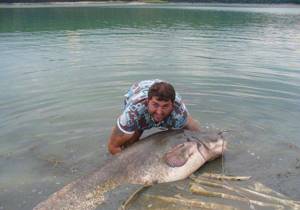
From the beginning of June to November, when approaching a reservoir in the pre-dawn hour, you can hear the sound of numerous quokkas with which fishermen hit the water. These are the somyatniks. The depths in the places where they are caught range from four to fifteen meters. The catfish stands here at the edge of the old bed of the Kuban River, which is now hidden by the thickness of the waters of the artificial sea. The distance between the boats is 50-60 meters. There are practically no newcomers among them. They usually hunt alone; each of them has been catching catfish here for several years.
Catfish hunting on the Kuban River
The main dream of any Kuban fisherman is to become the owner of a trophy catfish, which lives in abundance in the Kuban. You can catch huge fish either with or without a swimming device. In the latter case, you will need to find a place with great depth and a hard bottom surface.
And here's what you need to know: Lakes of the Leningrad region
Given the strong current, it is recommended to use anchors to secure the selected area. Catfish show the highest degree of activity closer to 9-10 o'clock in the morning and after 18 o'clock.
Fishing tips! Bottom tackle is suitable for fishing, and it is better to prepare crucian carp, mole cricket or reed green worm as bait. Having caught a catfish on a hook, you should use a landing net when retrieving it, which will reduce the risk of the desired prey being torn off the hook.
